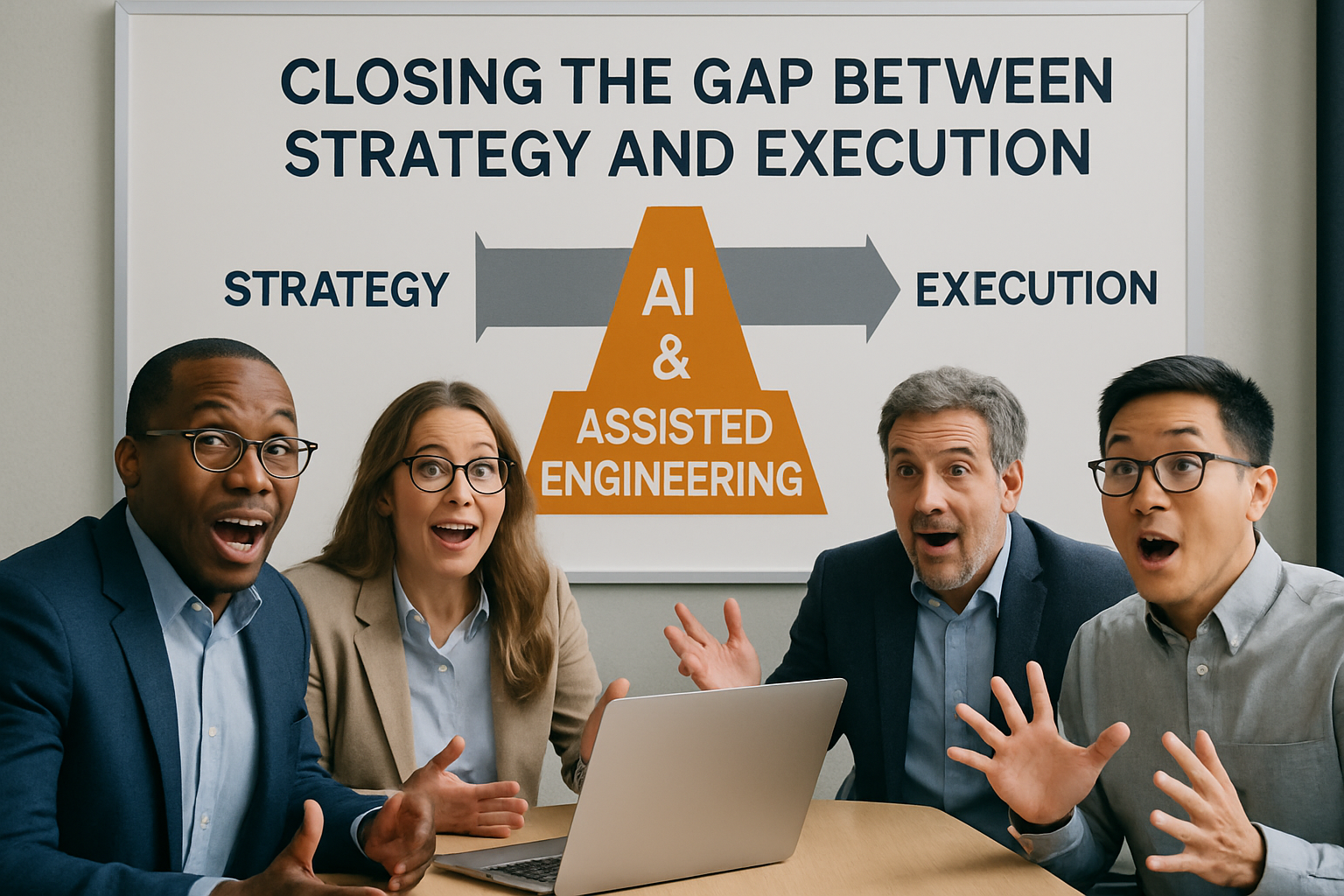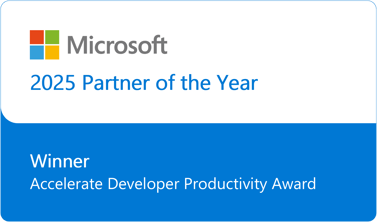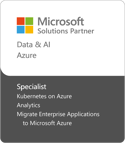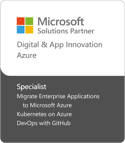Modernization strategies often look great on paper. You’ve identified the right workloads, aligned with business goals, and mapped out a high-level roadmap. But then comes the hard part: execution. This is where many organizations stumble.
The gap between strategy and implementation is wide—and growing. Teams are overwhelmed by complexity, under pressure to deliver faster, and often lack the tools or clarity to move from plan to production. That’s why the Assisted Engineering capabilities of the Innovation Accelerator are so transformative.
In this post, we’ll explore how Assisted Engineering helps organizations move from “what” to “how” with speed, precision, and confidence.
The Execution Gap: Why Strategy Alone Isn’t Enough
Even with a clear modernization strategy, execution can falter due to:
- Ambiguity: Teams don’t know what the target architecture should look like.
- Manual effort: Backlogs are built by hand, often inconsistently and without traceability.
- Tooling gaps: There’s no unified way to generate infrastructure, pipelines, or governance artifacts.
- Lack of alignment: Developers, architects, and operations teams work in silos, leading to rework and delays.
The result? Projects stall, technical debt grows, and business value is delayed.
The Innovation Accelerator’s Answer: Assisted Engineering
Assisted Engineering is the connective tissue between strategy and delivery. It’s a set of intelligent, automated capabilities that translate modernization plans into actionable, production-ready assets.
Think of it as a co-pilot for modernization—one that helps you design, generate, and launch modernization initiatives with minimal friction and maximum impact.
What Assisted Engineering Delivers
1. Target Architecture Generation
Based on workload context—business, technical, and DevOps—the accelerator generates a recommended target architecture. This includes:
- Infrastructure components
- Integration patterns
- Security and compliance layers
- Scalability and availability configurations
Teams don’t have to guess or start from scratch. They get a blueprint aligned with best practices and organizational standards.
2. Modernization Backlog Creation
The accelerator automatically generates a detailed backlog of work items, including:
- Refactoring tasks
- Infrastructure provisioning
- CI/CD pipeline setup
- Security and governance implementation
- Testing and validation steps
Each item includes effort estimates, dependencies, and sequencing. Project managers and developers get a ready-to-execute plan, reducing planning time and increasing delivery confidence.
3. Business Case Elaboration
Assisted Engineering supports the creation of a business case by calculating:
- Current vs. future state costs
- Time to breakeven
- ROI projections
- Risk mitigation benefits
It also supports “what-if” scenario modeling to help stakeholders evaluate trade-offs. Business and IT leaders can make informed investment decisions with clear financial justification.
4. Code and Pipeline Generation
Where applicable, the accelerator can generate:
- Infrastructure as Code (IaC)
- CI/CD pipelines
- Governance as Code
- Monitoring and alerting configurations
These artifacts are aligned with the selected templates and organizational policies. Reduces manual effort, ensures consistency, and accelerates time-to-deployment.
Real-World Example: From Strategy to Sprint in a Week
Let’s say a healthcare provider has prioritized a legacy patient portal for modernization. The strategy is clear: re-architect to a microservices model, move to Azure, and improve DevOps maturity.
With Assisted Engineering, they:
- Generate a target architecture that includes Azure App Services, Cosmos DB, and Azure API Management.
- Create a backlog of 60+ work items, including environment setup, service decomposition, and pipeline configuration.
- Produce a business case showing a 14-month breakeven and 3x ROI over three years.
- Deploy Platform Engineering templates that provision infrastructure and pipelines in hours—not weeks.
The result? The team moves from planning to sprinting in under a week—with full alignment and visibility.
Why It Matters
Assisted Engineering is more than automation. It’s about empowering teams to execute with clarity, speed, and confidence. It ensures that:
- Architects don’t have to reinvent the wheel.
- Developers aren’t blocked by ambiguity.
- Project managers have a clear path to delivery.
- Executives see progress tied to business outcomes.
It’s the difference between hoping a strategy works—and knowing it will.
What’s Next
In the final post of this series, we’ll explore how the Innovation Accelerator supports GenAI adoption and innovation at scale—helping organizations move beyond proof-of-concepts to production-ready AI solutions with curated templates, governance, and business alignment.
BACK:
Part 3: In Engineering the Future — Platform Engineering and Template-Driven Delivery
NEXT:
Part 5: GenAI and the Next Frontier — Scaling Innovation with AI-Driven Templates









